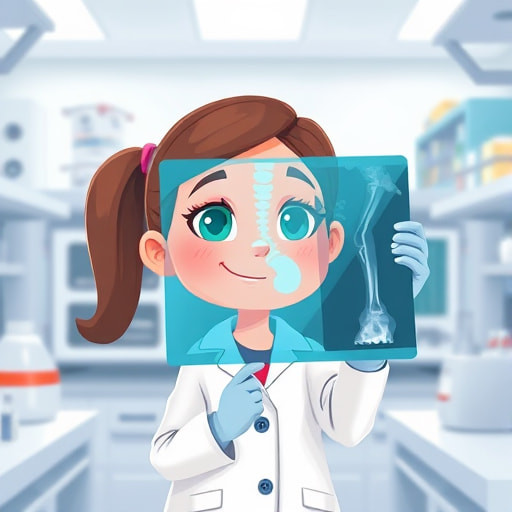Unlocking Life's Blueprint: The Story of DNA
In the early 20th century, a group of brilliant scientists embarked on a quest to uncover the secret of life hidden within a tiny molecule called DNA. This story begins in 1953, when two young scientists, Francis Crick and James Watson, made a groundbreaking discovery that would change our understanding of biology forever.
At Cambridge University in England, Crick and Watson believed that life could be explained through molecules. They were inspired by the idea that there was a set of instructions, like a script, that told cells how to function. They focused on DNA, which is made up of just four chemical building blocks: adenine (A), thymine (T), guanine (G), and cytosine (C). They thought that if they could figure out how these chemicals were arranged, they could unlock the mysteries of life.
Meanwhile, in London, another pair of scientists, Rosalind Franklin and Maurice Wilkins, were also studying DNA. Rosalind, known for her intense focus and determination, took some of the clearest X-ray photographs of DNA, which revealed its structure. However, she did not receive the recognition she deserved during her lifetime.
As Crick and Watson worked on their model of DNA, they faced competition from another famous scientist, Linus Pauling, who had his own ideas about DNA's structure. However, Crick and Watson decided to take a different approach by building models based on the limited data they had. They spent countless hours discussing and experimenting, driven by their curiosity and passion for discovery.
In 1953, after much hard work, Crick and Watson finally revealed the double helix structure of DNA. They discovered that DNA looks like a twisted ladder, with the chemical bases (A, T, G, and C) forming the rungs. This structure explained how DNA could replicate itself, allowing genetic information to be passed from one generation to the next. They realized that the specific pairing of the bases—A with T and G with C—was crucial for this process.
To confirm their findings, Crick and Watson built a model and compared it with Rosalind Franklin's data. When they presented their model to the King's College team, they were met with excitement and validation. This moment marked the beginning of a new era in genetics and our understanding of life itself.
Although Crick and Watson received the Nobel Prize for their discovery, Rosalind Franklin's contributions were overlooked during her lifetime. Sadly, she passed away before she could see the impact of her work. Today, we recognize her as a key figure in the discovery of DNA.
The discovery of DNA opened the door to countless scientific advancements. Scientists began to explore how DNA controls life, leading to breakthroughs in medicine, genetics, and our understanding of human nature. Crick continued to study the mysteries of the brain, while Watson became a leader in DNA research.
In conclusion, the story of DNA is not just about a molecule; it is about the collaboration, competition, and passion of scientists who sought to understand the essence of life. Their work has shaped modern biology and continues to influence our understanding of genetics today. As students of biology, you are part of this ongoing journey to explore the wonders of life at the molecular level.

The End

What is Scarlett Panda?
We use AI to create magical, personalized stories for your kids in seconds.
- Starring them, their friends, and even their favourite toys.
- Explore any topic, from dinosaurs to detectives.
- Ready in seconds, perfect for bedtime.
